
The Tiled Kitchen by Harry Bush has been been on the Post before but it must be ages ago and it is so memorable that it easily bears repetition. It’s at the Museum of London and is 1954.

The Tiled Kitchen by Harry Bush has been been on the Post before but it must be ages ago and it is so memorable that it easily bears repetition. It’s at the Museum of London and is 1954.
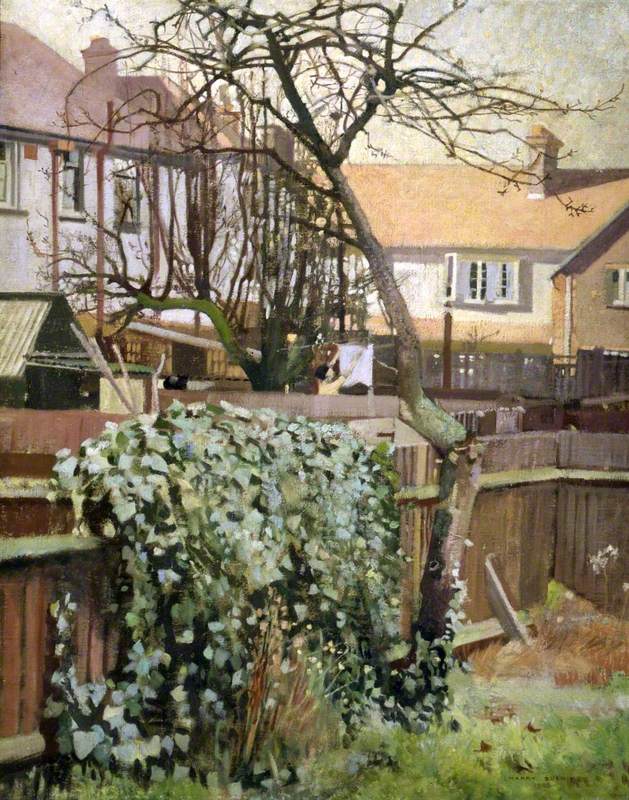
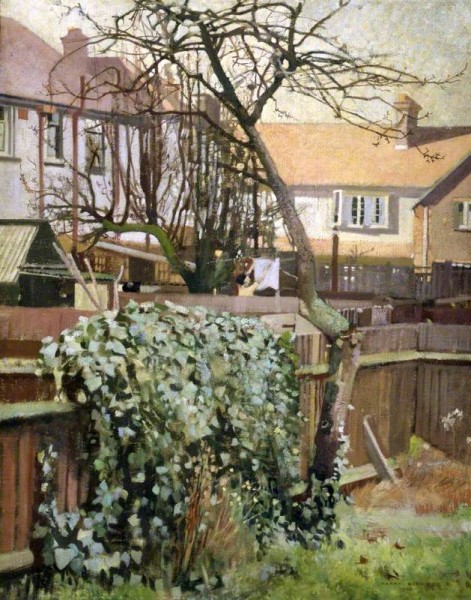
This week on the Post we mark, celebrate, mourn the fact that it is December already and the most important election of the last few decades (?since 1945) is only ten days away. This Post is presumably almost entirely read by people who agree with us when we say in mystified tones – the wail echoes round the office – how can anyone contemplate voting for the Tories? . And, yes, like millions of other people, we are all in a state of complete turmoil, helpless, only cheered up by Lydia’s baby being increasingly and beautifully visible, the office dog Naska (actually not our dog but we pretend he is) and, of course, the wonderfulness of the three October books which people are LOVING. So to mourn, celebrate, soothe, we simply went to ArtUK (we hope everyone knows about this superb site?) and typed in December and London and immediately found Harry Bush’s stunning December Sunshine, remembered that he is actually one of our very very favourite painters and despite the fact that we have had this painting on the Post before decided that this is the week to celebrate.Harry Bush. Next week will have to be political (but we shall try not to rant) and the week after has to be Christmas-y.
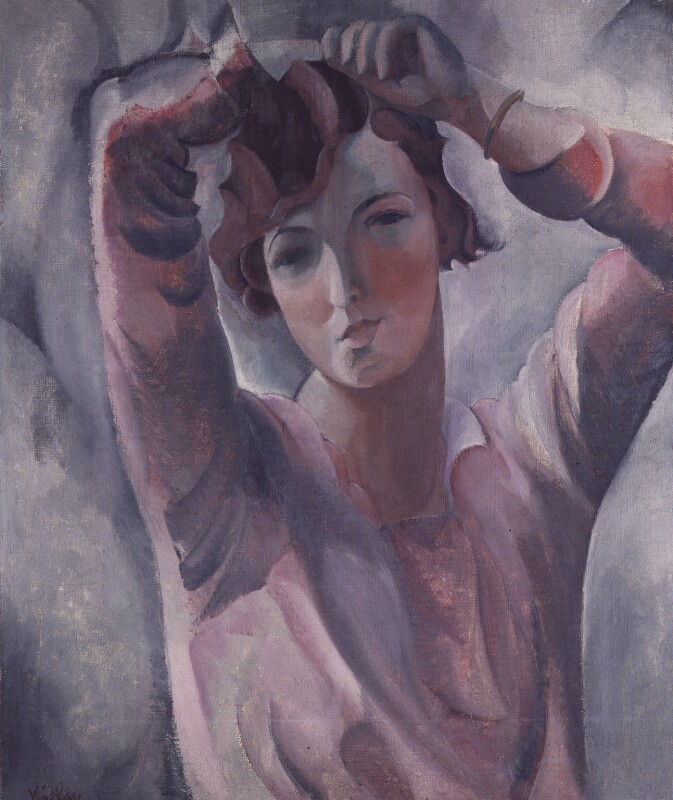
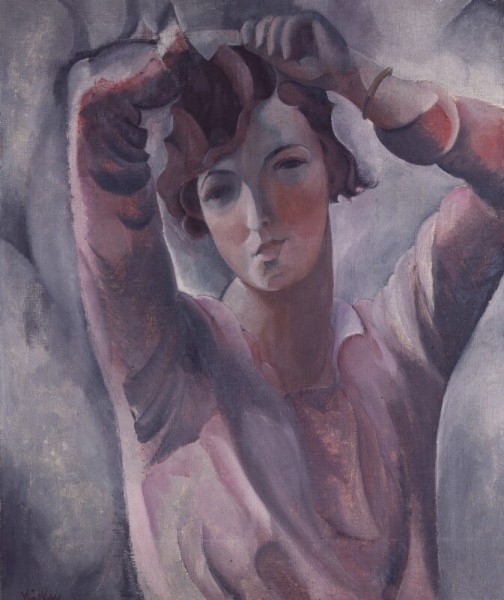
The final friend of Jessica Dismorr is the fascinating Paule Vezelay. This is her Self-Portrait. And here, finally, is the Guardian article about the exhibition.
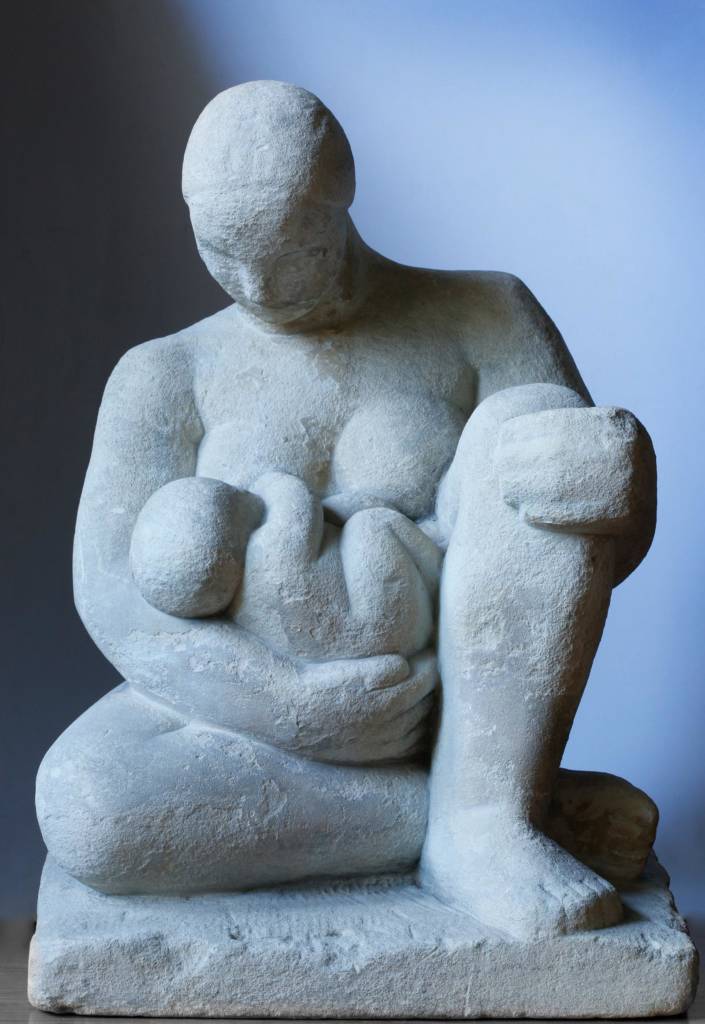
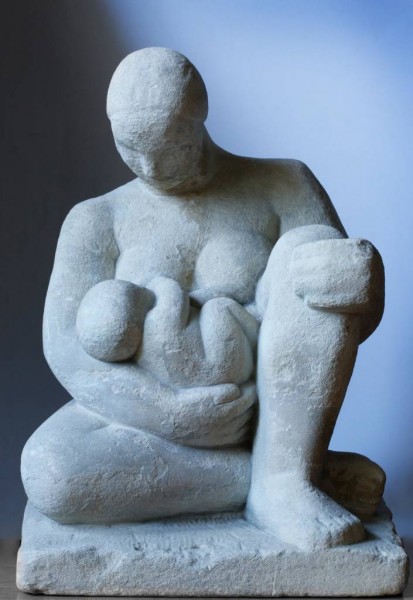
Betty Rea’s Mother and Child 1934 was certainly radical. Here is more information about this certainly overlooked but obviously fascinating sculptor and woodcarver (before doing Mother and Child in stone she had done it a few years earlier in wood).
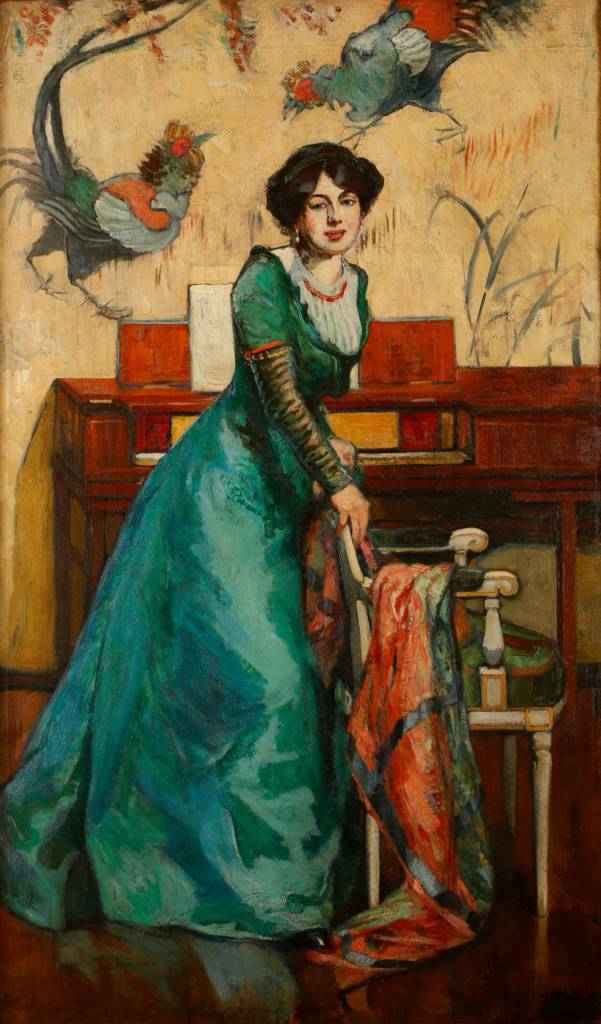
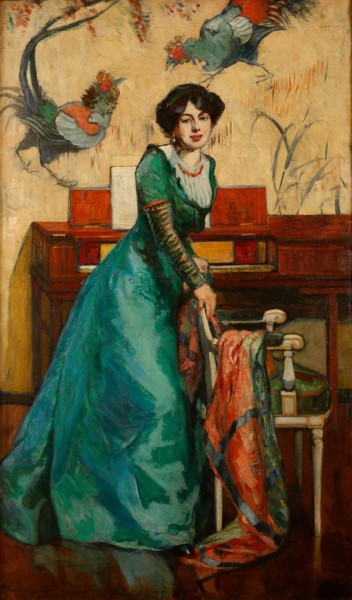
This is Ethel Wright’s Portrait of Una Dugdale Duval (The Music Room) c. 1912. Here is an article from the Chichester Observer which shows the painting on display in a rather satisfying way (for those of us who are not able to get to Chichester for the exhibition).
.
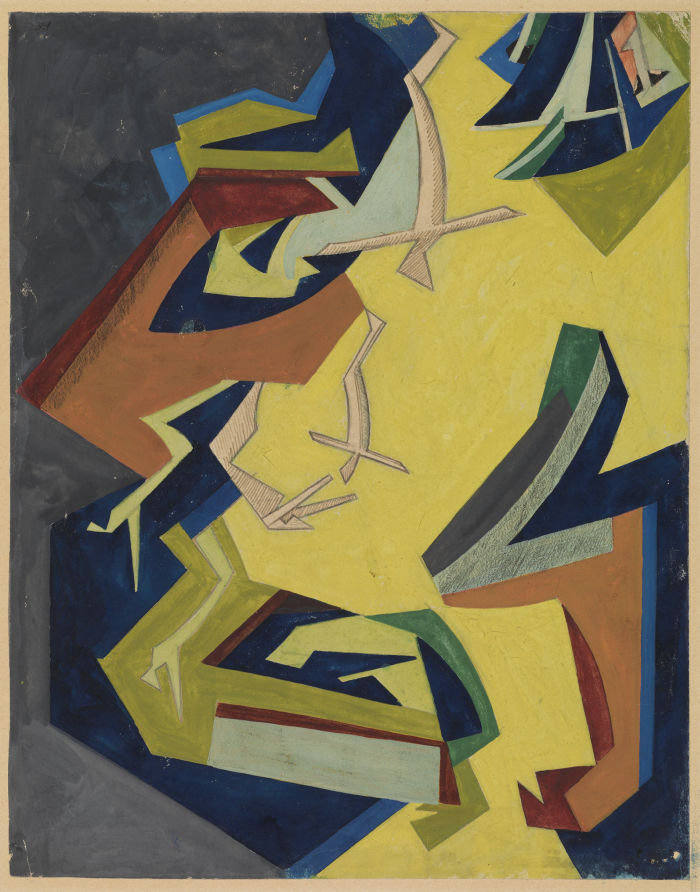
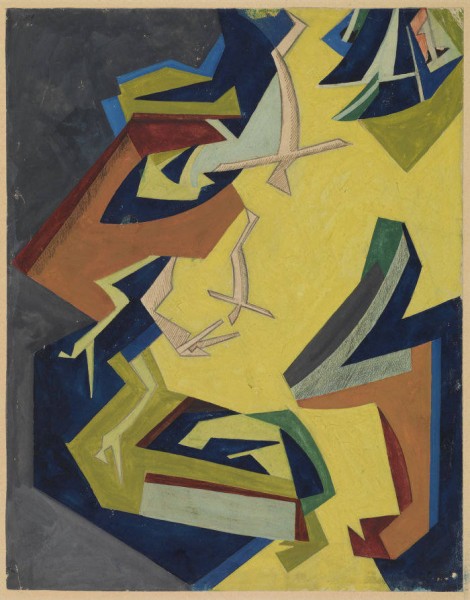
Helen Saunders (1885-1963) was in Jessica Dismorr’s circle. This is her Vorticist Composition Yellow and Green. Richard Cork has written: ‘Since Saunders’ early work earned her a respected place in experimental circles, the gathering obscurity of her later years seems cruel. She endured the neglect with uncomplaining stoicism, for her innate warmth prevented her from succumbing to bitterness.’ Here is Cork’s DNB entry about her, reproduced here in full since we are always sadly aware that many people can’t access the DNB (it is in fact free with any library card): ‘Jessica Dismorr’s friend Helen Beatrice Saunders (1885–1963) was born on 4 April 1885 at 10 Addison Road, Bedford Park, Chiswick, London, the daughter of Alfred Robert Henry Saunders, a solicitor, and his wife, Annie, née Daley. After being educated at home, Saunders studied at the Central School of Arts and Crafts and at the Slade School of Fine Art (1906–7), and exhibited with the Friday Club in 1912. By then her interest in post-impressionism was evident, and she showed her work at the Allied Artists’ Associationin 1912 and 1913. One of the first in Britain to work in a non-figurative style, Saundersreached her most extreme stage as a painter in 1914 when she exhibited at the Whitechapel Art Gallery’s ‘Twentieth Century Art’ exhibition and joined the Rebel Art Centre. Like Dismorr, she contributed a poem as well as an illustration to the second issue of Blast, and was included in the vorticist exhibitions in London and New York. But she came closest to Lewis when together they painted murals in the Vorticist Room at the Restaurant de la Tour Eiffel, Percy Street, London. At the end of her life Saunders was living at 39 Gray’s Inn Road, Holborn, London. Following her accidental death by gas poisoning on new year’s day, 1963, three of her works—Monochrome Abstract Composition (c.1915), Abstract Composition in Blue and Yellow (c.1915), and Abstract Multicoloured (c.1915)—were that year presented to the Tate Gallery in memory of her sister by Ethel M. Saunders.’ Later today we shall get our lunch from the lovely John Charlick in Gray’s Inn Road and pay tribute to Helen Saunders outside number 39.
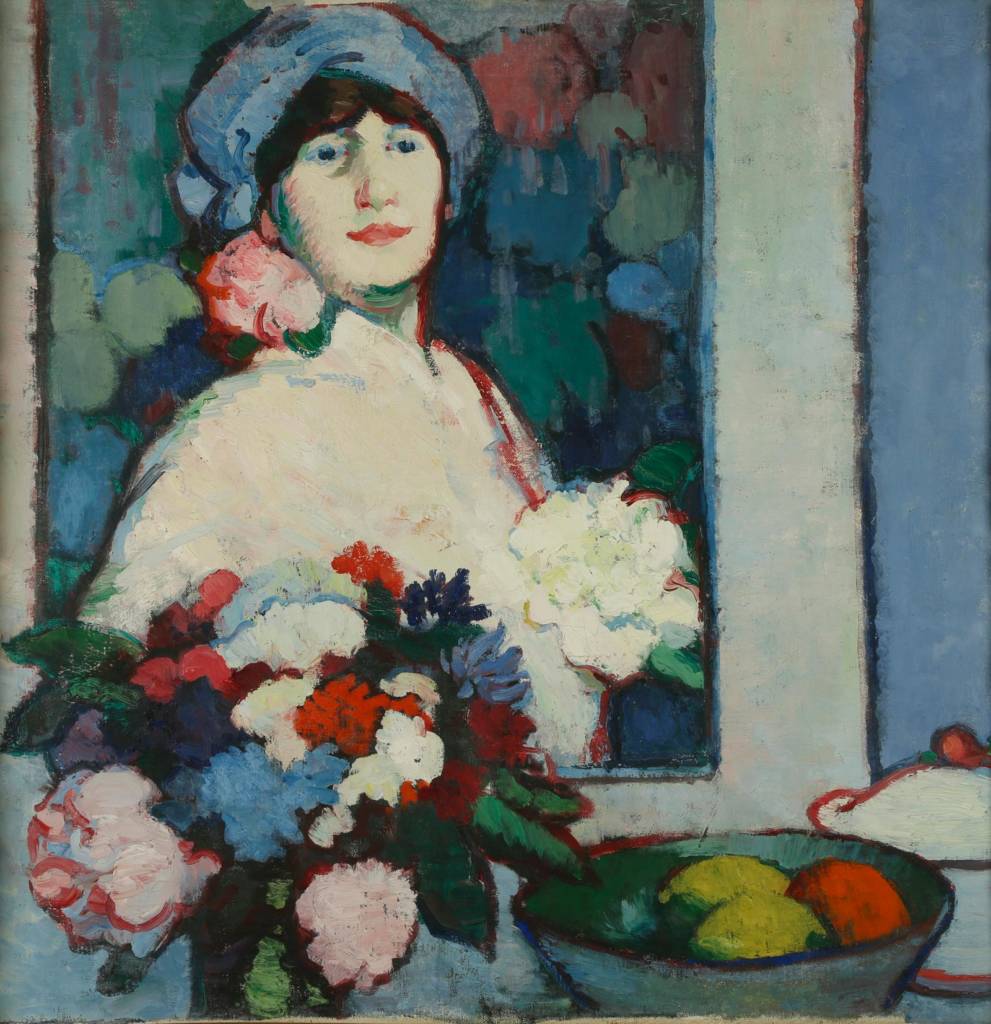
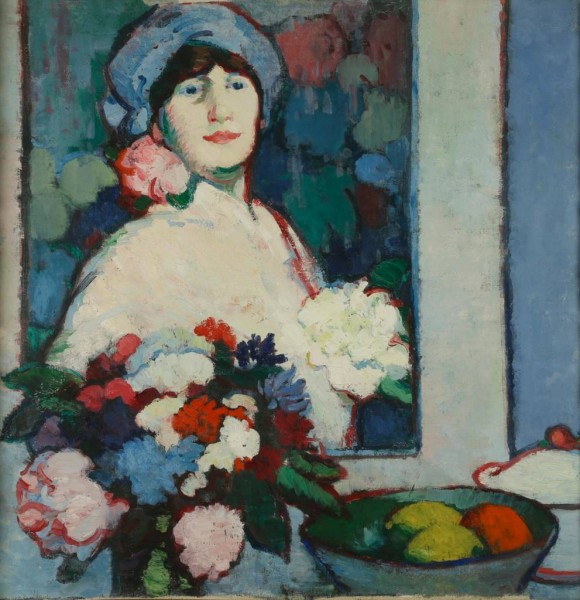
Jessica Dismorr and Her Contemporaries is a huge subject, enough for several weeks of the Post, so this week we shall simply make some glancing references and then return to these fascinating women at a later date. First of all, Anne Estelle Rice, well-known to Persephone readers for her friendship and links with Katherine Mansfield, but of course a superb painter in her own right. This is Self-Portrait (one of many painted by AER, think how hard it must have been for a woman to employ models to sit for her), it’s 1909-10 and is the kind of painting which makes one mutter for hours about who decides what is great art and what is minor: if you were told this was by a well-known French painter whom we all revere you wouldn’t blink. But it isn’t, it’s a forgotten picture (in a private collection) by a virtually forgotten great painter.
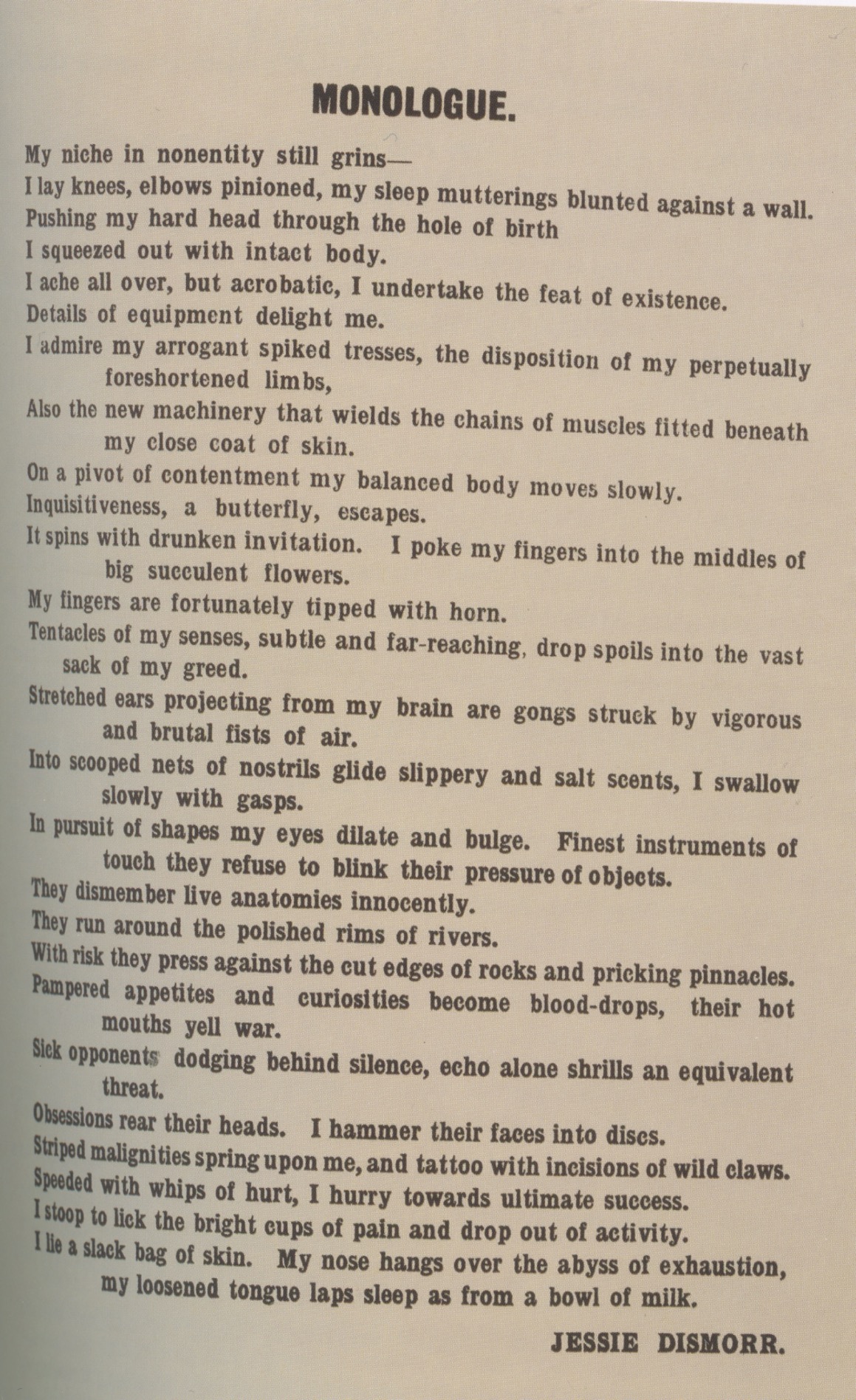
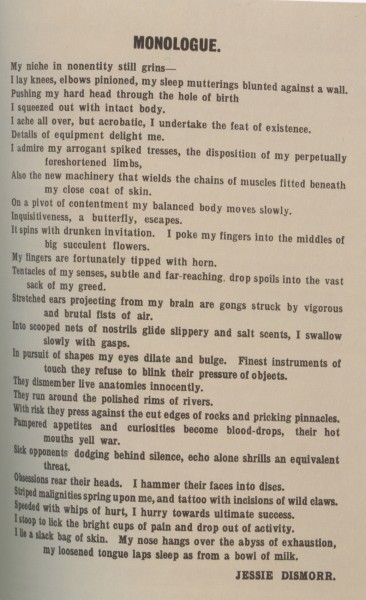
And here is some of Jessica Dismorr’s writing – a ‘Monologue’ that appeared in Blast No. 2 on 1915. Next time we are tired, instead of saying that let’s say ‘my nose hangs over the abyss of exhaustion’. Of course that is flippant because she was shattered by the war. But what a wonderful turn of phrase she had.
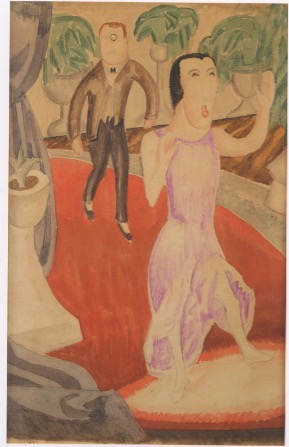

‘Dismorr also uses distortion of scale to create a psycho9logical impact, linking her figurative work of this period to her earlier experience with Rhythm and particularly to the writing of Katherine Mansfield who used shifts in size in her short stories to communicate the terror that the powerful can inspire in the powerless’ (Catalogue). This is Ethel Levey 1924. The comparison with Katherine Mansfield is interesting. What is it about this painting that makes it something of a caricature like some/many of the KM stories? The painting is a short story in itself, though not a kind one.
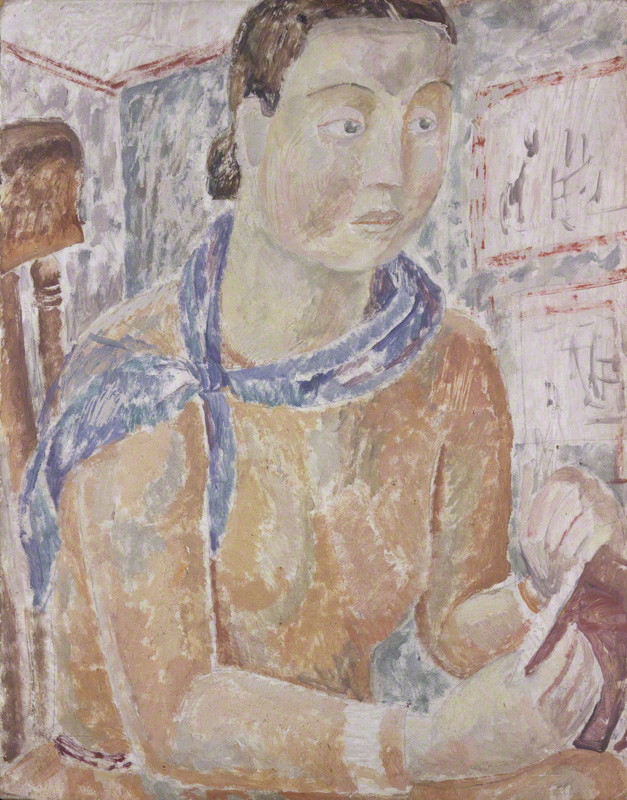
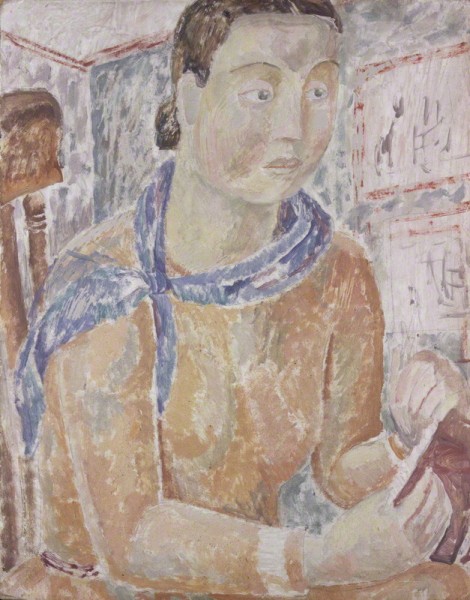
Jessica Dismorr is so fascinating that we have decided to devote this week on the Post to her and next week to ‘her contemporaries’. She had a nervous breakdown in 1920, her anguish possibly exacerbated by her experience as a war nurse. Books by Mary Borden, Cicely Hamilton (who wrote William in 1918 and couldn’t you imagine that you would have a nervous breakdown after writing it? Although CH didn’t in fact), Rebecca West and Vera Brittain leap to mind to explain this trauma. Here is JD in a 1926-7 self-portrait. What is there to say about those sad staring eyes?